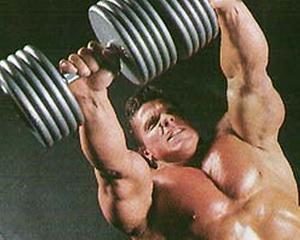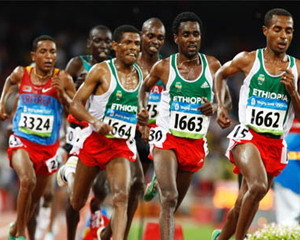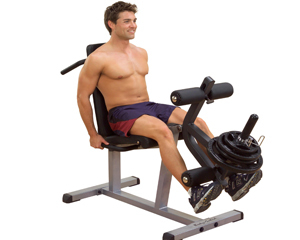HIMPERS HANDLES ON THE BENCH TILT DOWN
 Like a barbell bench press with a downward slope, the dumbbell bencher shifts the stress on the lower pectoral muscles, thereby contributing to their growth and development. Of course, it is safer to really lift large weights in the form of pancakes hung on the barbell, but, compared with the barbell, dumbbells allow you to work with a greater amplitude of movement. And as a result: the muscles contract even more, which can not but contribute to their enhanced growth.
Like a barbell bench press with a downward slope, the dumbbell bencher shifts the stress on the lower pectoral muscles, thereby contributing to their growth and development. Of course, it is safer to really lift large weights in the form of pancakes hung on the barbell, but, compared with the barbell, dumbbells allow you to work with a greater amplitude of movement. And as a result: the muscles contract even more, which can not but contribute to their enhanced growth.
The dumbbell bench press with a downward incline “cuts” the bottom and the outer part of the pectoral muscles, which gives them a more distinct and pronounced form. In addition, the implementation of this exercise gives an additional advantage in sports such as golf, tennis, boxing, wrestling, American football and many others, where such a movement occurs.
Technique performing dumbbell bench press with a slope down
Proper exercise technique:
1. Lower the long back of the bench 30 degrees below the horizon (floor). Lie on the bench, so as to touch her buttocks, shoulders and head, do not bend the back, and bring your feet under the support rollers. Take dumbbells with a grip from above and squeeze them up until the arms are fully straightened so that they touch each other. This is the starting position.
2. Inhale, hold your breath and gently lower the dumbbells. At the lowest point, the dumbbells should practically touch the outer sides of the chest, and the elbows should be fully extended. At the lowest point without making a pause, a powerful effort, while maintaining a smooth course, squeeze the dumbbells up to the starting position. After passing the dead center (the most difficult part of the path), exhale.
3. In the initial position, make a minimum pause and perform the following repetition.
It is important:
It is important that the dumbbells are in the plane of the shoulders throughout the entire range of motion – when the arms are perpendicular to the floor. Tilting your arms in a vertical plane, you increase the load on the shoulder joint and risk losing weight control, which is fraught with injury.
As with other presses, you must hold your breath during the lowering of the weight and at the beginning of the ascent. This will not allow the stabilizing muscles to relax, which ensure the body is kept in a stable position, which is especially critical when performing the exercise on a bench tilted down when there is no additional support with the feet on the floor.
At the same time it is impossible to linger with an exhalation after overcoming the most difficult part of the ascent. Excessive blood pressure due to the inclination of the body (the head is below the legs) and holding the breath can lead to unpleasant consequences. For the same reason, it is necessary to choose the weight of the dumbbell so that you can master it, without pausing at the lowest point.
In between sets, be sure to take a vertical position to normalize the pressure.
By reducing the dumbbells at the top point above the chest, you thereby contribute to a clear definition (separation) of the inner part of the pectoral muscles and to work out the inner edge of the large latissimus muscle.
Options
Dumbbell bench press on a horizontal bench.
Dumbbell bench press on an incline bench. In this case, the angle of inclination depends on the distribution of the load. At a higher angle, the displacement occurs towards the upper pectoral and deltoid muscles.
Working muscles when pressing dumbbells on a bench with a slope down
chest muscles
deltoid muscles
triceps




